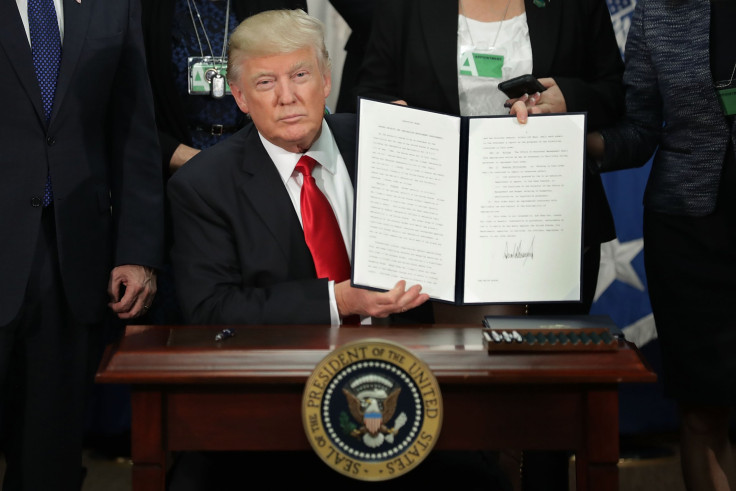Will Trump Be Impeached? Muslim Ban, Border Wall Spark Petitions To Charge President With Constitutional Violations

Within just a few days of becoming president of the United States, Donald Trump has signed numerous controversial executive orders, sparking calls for his impeachment over alleged constitutional violations. Since Trump has taken office, Twitter has exploded with trending hashtags like #ImpeachTrump, #ImpeachmentSoon and #ImpeachNow.
Trump signed an executive order Wednesday authorizing a wall to be built along the border of the U.S. and Mexico, along with an order directing the Department of Homeland Security to publish a weekly list of crimes committed by undocumented immigrants. The same order called for an end to federal funding to sanctuary cities, places that serve as safe havens for undocumented immigrants.
The president was also expected to sign an order temporarily banning refugees and suspending visas for citizens of certain predominantly Muslim countries. Though the order hasn’t yet been officially signed, the Huffington Post obtained a draft copy listing the seven countries the ban would apply to.
Trump’s critics have called those and other orders unconstitutional. A petition website launched Friday, before his inauguration and before any of his executive orders were signed, had garnered more than 100,000 signatures as of Tuesday.
“The nation is now witnessing a massive corruption of the presidency, far worse than Watergate,” ImpeachTrumpNow.org’s petition said.
Run by Free Speech for People, a nonpartisan, nonprofit organization, and RootsAction, an independent public interest initiative, the petition called on Congress to pass a resolution calling for the House Committee on the Judiciary to investigate the president to determine whether grounds for impeachment exist. A separate petition on Change.org calling for the president’s impeachment had around 47,000 of the 150,000 signatures it was asking for.
Though both entreaties have their fair share of signatures, the petitions are unlikely to go anywhere due to a Republican-dominated House of Representatives and Senate. Impeachment is a complex process that begins in the House and makes its way to the Senate, where a vote is held to remove the president from office. The House needs a majority vote to move it to the Senate, while the Senate requires a two-thirds vote to complete proceedings.
Should Trump get impeached, his duties would fall to Vice President Mike Pence, a staunch conservative who is likely to advance Trump’s policy decisions.

© Copyright IBTimes 2024. All rights reserved.






















